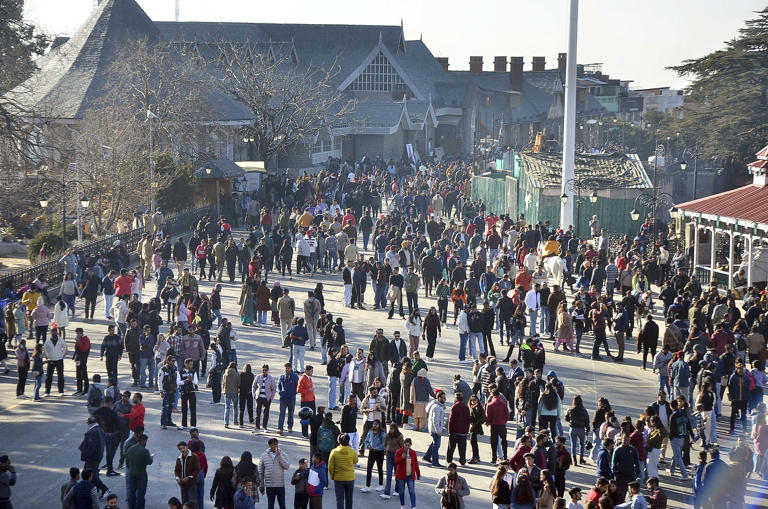According to a survey by the Tourism Industry Stakeholders Association, the average length of stay for visitors to Shimla has decreased from four to five days in the 1970s to one day now (TISHA). The report on significant variables impacting tourism and the viability of the hotel business in Shimla, however, states that the tourists staying in unregistered/unauthorized accommodations are not taken into account.
According to the association, the number of average days that tourists spend in registered accommodations in the queen of hills has decreased by 70–80% over the past five decades. The decline is attributed to traffic jams, parking issues, and the mushrooming growth of unregistered accommodations in and around Shimla, the state capital.
According to a local hotelier, Sushant Nag, issues like summertime water shortages, landslides on the Shimla-Parwanoo National Highway that make driving dangerous during the monsoon, district administration warnings about heavy traffic and the need to avoid driving on slick roads, and cancellations of reservations as a result of these issues have occurred frequently in the past.
The group is developing a road map to draw more visitors who will stay longer and improve foot traffic. According to MK Seth, president of the Tourism Industry Stakeholders Association, the Chief Minister will be informed of the current state of the tourism industry and given recommendations on how to foster a tourist-friendly environment, develop new attractions near popular tourist destinations, and publicise them.
“As people had more time and experienced fewer pushes and pulls than in the 1970s, the number of tourists visiting has multiplied. The average length shortens as the number of tourists rises when we calculate the mean average, “Chander Mohan, head of the university’s tourism department, stated that data does not include travellers staying in illegal facilities that are being offered at low prices.
According to Amit Kashyap, director of tourism, the number of tourists staying in Shimla town may have decreased as some travellers seek solace in rural areas. However, with the improvement of rural infrastructure, including better roads, and the opening of homestays, the number of tourists staying in those districts has increased.
Hoteliers assert that the industry has also been impacted by high tax slabs, exorbitant water and garbage fees for legitimate hoteliers, and cheap, unregistered lodgings (hotels, homestays, and units under the Bread and Breakfast plan) given to tourists.
Online room sales by unlawful buildings waiting to be legalised constitute unhealthy competition. According to the research, around 350 such unregistered units have popped up in and around Shimla that are neither listed under HomeStay or Bed and Breakfast (B&B) nor are they registered with government agencies but instead run through internet portals.
In Shimla town, there are around 2,800–3,000 parking spaces and hotels. The locals occupy about 40% of the six major parking lots in the town. According to Seth, overcharging for private or leased parking has become a common practise, and tourists are the ones who pay the price. Seth also noted that because hoteliers are struggling to make ends meet, they have begun leasing out their properties, and the leaseholders are forced to charge low rates for rooms in order to make their lease payments, which fosters unhealthy competition.
According to data from the Shimla district, there are 556 registered hotels, guest houses, and homestay units totaling 9,530 rooms, of which around 50% are in Shimla town and the surrounding areas.
According to the rules, the Bed and Breakfast programme can have six rooms, while Homestay units are only allowed to have a maximum of three rooms. However, these rules are frequently broken.
One of the top businesses for creating jobs in Himachal Pradesh is the tourism sector, which makes up around 7.5% of the state’s GDP. Up to 9,52,617 tourists travelled to the Shimla region in 2021.



